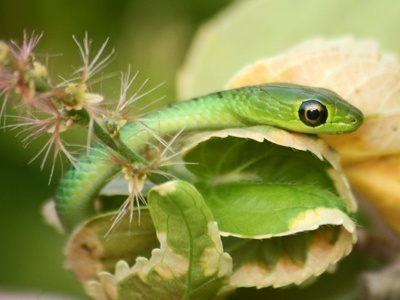

If you want to see the real bush, you do need to know the dangers and stay alert. If you’re prepared to face the risks, grab some cheap travel insurance and come and have a look.
A simple fact- People die in the bush every year. Bush hazards are very real, and not always obvious:
Heat: Dehydration can kill, quite easily. Some parts of Australia record temperatures of up to 50C in summer. Other hazards include heat stroke, kidney stones and related medical issues. Carry plenty of water and stay out of the heat if at all possible.
Animals: These animals are genuine risks:
- Crocodiles: Extremely big and very dangerous, and often aggressive. When told about safety precautions in croc country, follow them to the letter, no exceptions. Crocodiles don’t give refunds.
- Wild pigs: Will usually avoid humans, but if they get nasty, they’re dangerous and ferocious. Avoid like the plague.
- Snakes: Extremely common. Most Australian snakes are poisonous, and many are very dangerous. Learn the anti-venom requirements and first aid procedures. Don’t guess about this, because these snakes can kill quite easily.
- Insects and spiders: Paralysis ticks, European wasps, the Australian Trapdoor and Redback (the local Black Widow species) spiders are common in some areas. Mosquitoes may carry Ross River Fever (break back fever) and dengue. Do your homework and read up on the local first aid procedures.
- Dingoes and Super dogs: Dingoes aren’t necessarily dangerous to humans, but stressed dingoes have been known to attack children. The “super dogs”, packs of feral dogs, are potentially dangerous. The simple solution is take no chances.
Bushfires: Deadly and often very large fires, and they’re also extremely fast moving. Radiant heat from these fires is also dangerous and can cause burns at a range of 100 metres. Get upwind, and do not drive into areas of poor visibility. Follow police and emergency services instructions immediately.
Widow makers- Unstable trees: Some Australian bush trees fall over after heavy rain or when their roots are disturbed. You’ll see signs of the root system moving, and notice a tilt compared to other trees. These trees have earned their name. They can demolish a house. If a tree in the area looks unstable, park or camp well away.
Firearms: The non-debatable preference in Australia is that only competent people handle firearms. Firearm accidents are no joke when you’re literally miles from anywhere. If you want to carry a gun, play safe. You must be licensed to have a firearm.
Communications and reliable transport: Standard practice in bush travel is best practice survival, not misplaced machismo:
- Make sure people on your line of travel know when to expect you.
- Keep your vehicle well maintained at all times.
- Make sure you have a two-way radio or other type of efficient communication, and spares, including a charger.
Children in the bush: Do not allow young kids out of sight, or where they can’t see where they’re walking. Make sure the area is safe, and stay alert at all times.
These are only the basics. In the bush, you must know how to manage situations. Get some travel insurance and see the greatest place in the world.
[youtube]http://www.youtube.com/watch?v=6leHGHCKeSg[/youtube]